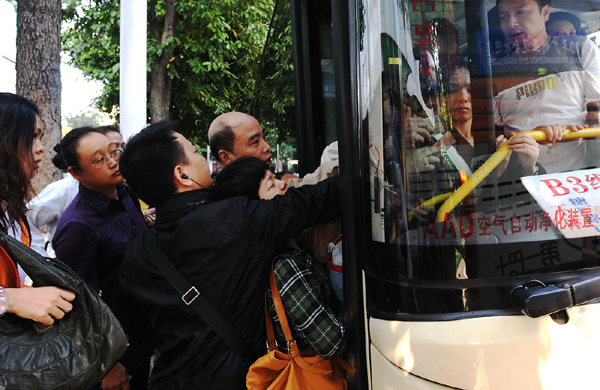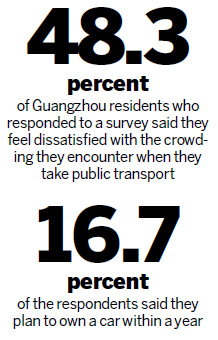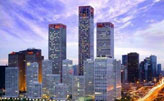Society
'Residents dissatisfied with public transport'
Updated: 2011-05-13 06:46
By Li Wenfang (China Daily)
Guangzhou - Nearly half of the residents in the Guangdong provincial capital said they feel dissatisfied with the crowding they encounter when they take public transport, a recent survey showed.
 Commuters in Guangzhou, capital of South China's Guangdong province, struggle to step onto a bus on November 8, 2010. Provided to China Daily |
Of the residents polled by the Guangzhou Public Opinion Research Center, 48.3 percent said they are sick and tired of being packed into public buses and subways like sardines.
The survey results indicated that authorities have yet to fulfill their pledge to place a priority on improving public transport. Local residents said the situation has prompted many people to buy cars.
The survey showed the rate of discontent with crowding on public transport has risen by 12.4 percentage points above what it was in 2008. If the latest results are compared with those from a poll conducted in 2010, people appear to be more dissatisfied with their experiences on buses and subways than they were a year ago with inflation, with income differences among the population and with the high cost of housing.

Meanwhile, the rate of discontent over crowding in buses has stayed around 50 percent since 2008, while discontent over crowding in subways is at 43.7 percent, 20 percentage points higher than it was in 2008.
Although taking public transport has become cheaper, the crowding, poor air quality and unsanitary conditions found at times in public vehicles still grate on passengers, according to Wang Wenjun, assistant to the executive chief of the Guangzhou Public Opinion Research Center.
The situation has given rise to enough mental and physical anguish to prompt many people to buy cars. In the survey, 16.7 percent of the respondents said they plan to own a car within a year.
Yet of the respondents who already own a car, 58.5 percent said they intend to drive them less. And 46.8 percent of those who plan to buy a car said they would change their minds if public transport were improved.
"I hope more buses will be available during rush hours, since I now have to wait for about 20 minutes to catch a bus," said Liang Yunshi, a local commuter. "I also hope the air-conditioning is cooler, because there are too many passengers during rush hour and it's hard to breathe."
The number of Guangzhou residents who take public transport has risen quickly since 2007, even while the use of private cars has become more common. As for the local bus system, it has not been expanded quickly enough to meet the demand for public transport, leaving subways as the main means people without cars have of getting places.
The number of passengers taking local buses and trolleys increased by 52.63 percent from 2006 to 2010, but the number of buses and trollies increased by only 17.04 percent during the same period.
The Guangzhou Public Opinion Research Center advised the transport authority to greatly increase the number of buses on the roads and to allocate roads to better accommodate public vehicles.
The crowding seen in public vehicles during rush hours is one of the three main issues concerning public transport that should be dealt with this year, Xian Weixiong, director of the Guangzhou communication commission, said on Tuesday.
In one attempt at a remedy, 30 buses will be introduced to the city's Bus Rapid Transit system next month. And the city's subway operator plans to have 90 new subway trains operating before 2013.
Zheng Erqi contributed to this story.
Specials

The song dynasty
There are MORE THAN 300 types of Chinese operas but two POPULAR varieties are major standouts

Sino-US Dialogue
China and the US hold the third round of the Strategic and Economic Dialogue from May 9-10 in Washington.

Building communities
American architect John Portman and his company have developed more than 30 projects across China.